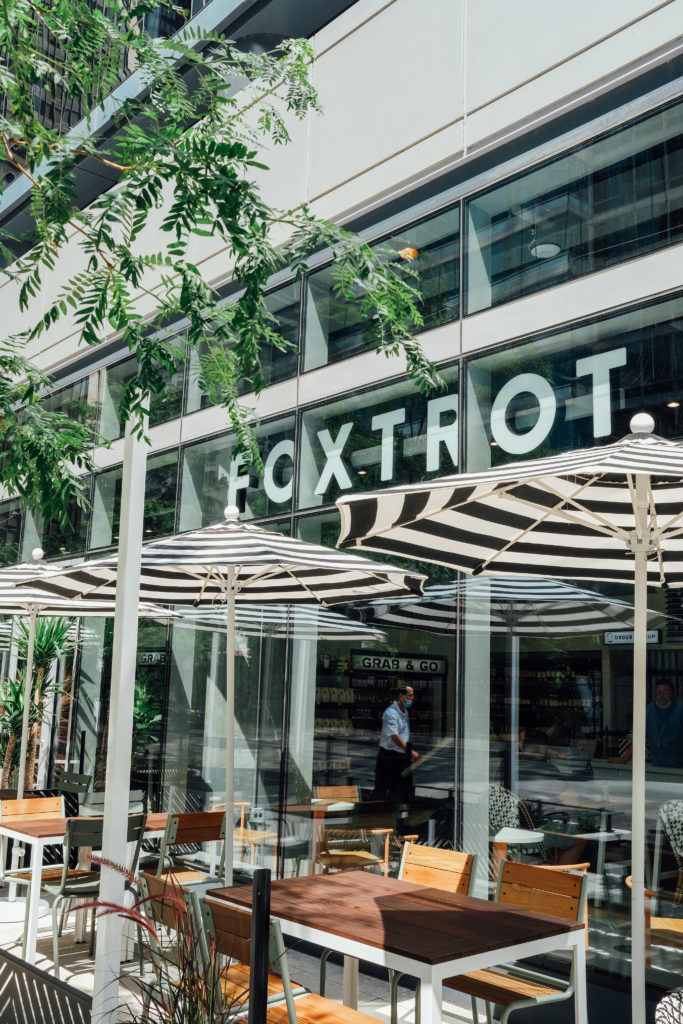Over the past several years, many grocery retailers have worked hard to incorporate omnichannel elements into the way they operate. For Foxtrot Ventures Inc., which opened its first small-format grocery store in 2014, having an online presence is part of the original business model.

Foxtrot’s location in Chicago’s Streeterville neighborhood opened July 2, 2020.
The retailer launched in 2013 with a mobile app to take delivery orders for items such as craft beer, fine cheese and specialty ice cream. The retailer’s founder and CEO Michael LaVitola launched the company while he was a student at the University of Chicago’s Booth School of Business. It initially served the university’s students.
LaVitola says he envisioned Foxtrot as a new model that would merge the intimacy of the traditional corner store with the convenience of ecommerce. “The grocery business is woven into the fabric of our everyday lives and, despite being so essential, the category had really not been disrupted. I saw a huge opportunity to improve it—with a focus on local products, curated assortments, on-demand delivery and seamless app experience,” LaVitola says.
Foxtrot designs its stores to serve customers more than one time per day, LaVitola says. The idea, he says, is to drive customer loyalty and repeat purchases from customers whether they are looking for a cup of coffee in the morning, a healthy, prepared lunch or dinner, or a bottle of wine delivered to their homes.
Foxtrot sells an assortment of groceries, prepared food, beer, wine, hard cider and hard seltzer. It also sells health, beauty and home-related items such as laundry detergent, toothpaste and products infused with cannabidiol, often called CBD. CBD, derived from cannabis plants, is used to make nutritional supplements, medications and beauty products. Foxtrot handles deliveries using its own couriers.
“Our approach to product curation is our hallmark,” LaVitola says. For example, the Foxtrot’s wine is hand-picked by its in-house sommelier and the retailer makes prepared meals in its own kitchens. Also included are local beers and other locally sourced products.
Like a growing number of grocery stores, Foxtrot’s stores include tables for eating on-site, making them both a small restaurant that sells groceries and a grocery store that sells prepared meals. That’s another way the retailer seeks to serve customers in various ways, depending on what they need at a given time, LaVitola says.
“Our delivery orders, purchased through our app, tend to be more market-focused, with prepared foods selections largely entrees or cheese and charcuterie-based,” LaVitola says. “In-store, our salads, sandwiches and coffee programs drive sales throughout the day, with add-ons from our snacks and sweets aisles.”
Carla Dunham, Foxtrot’s chief marketing officer, says the retailer initially opened its first store, in Chicago’s West Loop neighborhood, mainly to handle online orders. But Foxtrot soon realized the small-format (2,500 to 3,500 square feet) bricks-and-mortar presence was good at generating sales. Foxtrot gets half of its revenue from online sales both on its ecommerce site and in its app and half from in-store purchases, Dunham says. Foxtrot’s target customers are young professionals (aged 25-45) and urban-dwelling families who live in dense, walkable urban neighborhoods. The stores fulfill online orders.
The hybrid store and ecommerce model served Foxtrot well when the pandemic hit, Dunham says. “Our business model was already inherently designed to be super flexible,” she says. She says the retailer added some delivery personnel, but otherwise did not change its operations very much during Chicago’s recent coronavirus-related shutdown. In fact, it even opened a store during the pandemic..
As of July 2020, Foxtrot operated eight stores in Chicago, two in Dallas, Texas, and had plans to open two stores in Washington, D.C. in the fall of 2020. The retailer plans to expand to additional cities but won’t talk about specifics.
“Our focus is on opening our presence in D.C., continuing to expand our private-label selection and continuing to make our in-app shopping experience second to none,” LaVitola says.
Using the app, LaVitola says, gives customers “the fullest Foxtrot experience,” including personalized information about the retailer’s rewards program. “It also acts as your go to wallet in store—enabling quick, contactless payment in seconds,” he says.
Foxtrot has raised $24.8 million from investors since 2013, according to Crunchbase data. Foxtrot’s most recent funding round was in February 2020. That round raised $17.0 million.
This article is based on analysis from the Digital Commerce 360’s 2020 Online Food Report. This 51-page report offers an overview of the online grocery market, including total sales and growth and detailed analysis of the leading online grocery retailers. Also included are breakout sections on the online grocery operations of Amazon and Walmart and exclusive consumer insights into online grocery behavior and expectations. You can learn how to purchase the 2020 Online Food Report here.
Favorite